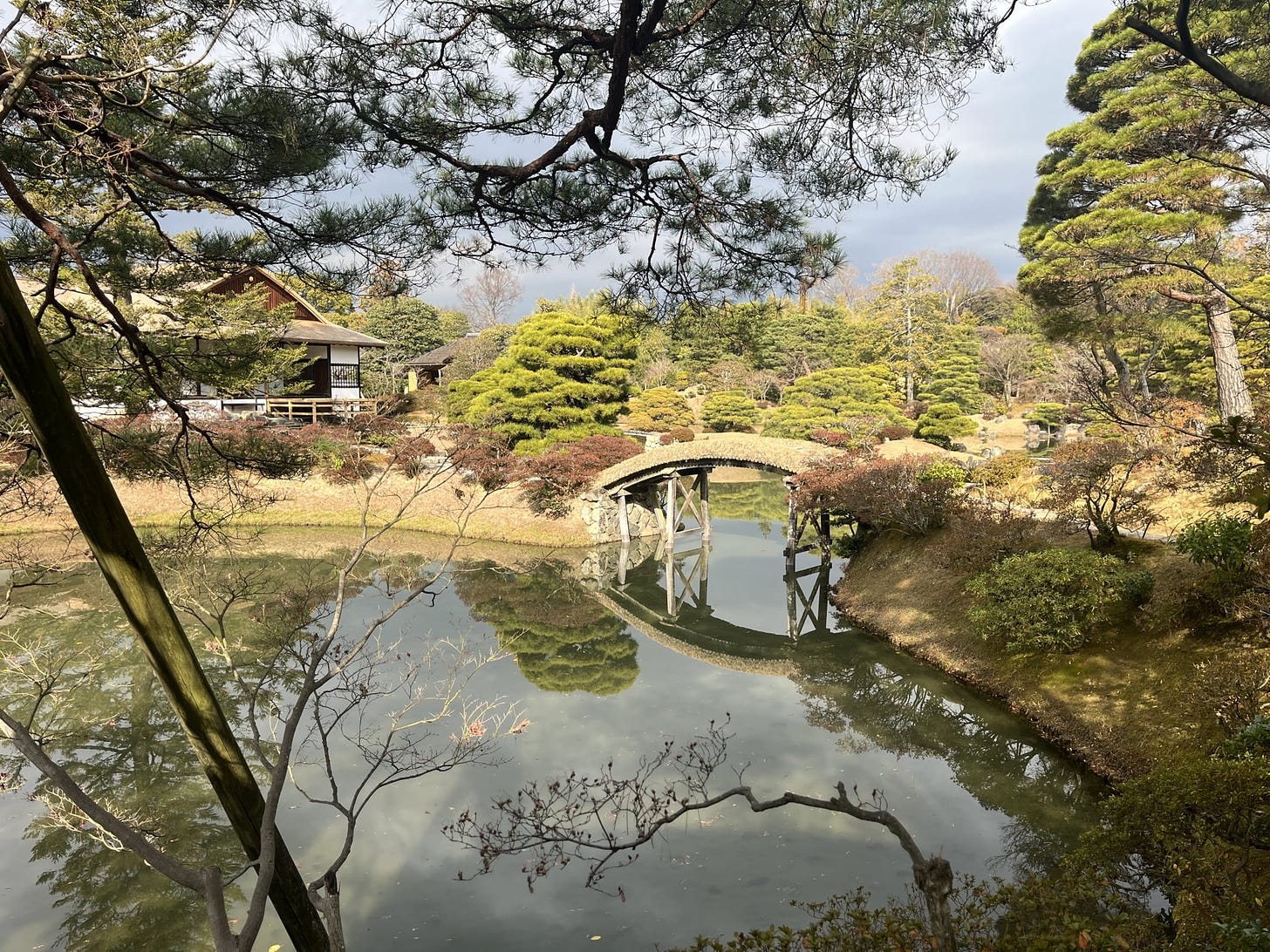Katsura Imperial Villa in Kyoto’s western suburbs is a masterclass in Japan’s architectural and garden design. Constructed during the early Edo period, this villa is renowned for its exquisite combination of natural scenery and meticulous craftsmanship. Walking here is like a journey through time exploring elegant tea houses, intricately landscaped gardens, and quiet pathways that reflect the profound aesthetic sensibilities of the era.
Conceived as a poetic tribute to Murasaki Shikibu, author of one of the first novels in the world, the villa’s every detail has been thoughtfully arranged to enhance the contemplative experience of visitors, as the area was already a popular location for the nobility’s villas. A visit to Katsura Imperial Villa reveals the refined elegance and timeless beauty that define Japanese artistry.
See also: Kyoto Imperial Palace: The Heart of Kyoto’s Ancient Traditions & Shugakuin Imperial Villa, Kyoto’s Hidden Aristocratic Retreat
What is Katsura Imperial Villa?
Katsura Imperial Villa (桂離宮) is a landmark of traditional Japanese architecture and garden design, completed in 1645. The villa was commissioned by Prince Toshihito, inspired by many passages of his favorite book The Tale of Genji, and later expanded by his son, Prince Toshitada. Designed with the aesthetics of the tea ceremony in mind, the villa emphasizes simplicity and an intimate connection with nature.
The main structures within the villa include the Shoin, Chumon, and several tea houses like Shokin-tei and Shoiken. These buildings are crafted using traditional materials such as wood, bamboo, and paper, following the Edo period’s architectural style. The villa’s interior features tatami-matted rooms, sliding shoji screens, and subtle decorations, aiming to create an atmosphere of understated elegance.
The garden at Katsura Imperial Villa is renowned for its strolling paths, designed to offer varying perspectives and views at every turn. The central pond, surrounded by meticulously placed rocks and seasonal flora, is a key feature. The garden also employs the concept of shakkei or borrowed scenery, seamlessly integrating the surrounding landscape into its design to enhance the sense of space.
The villa’s tea houses serve as tranquil retreats within the garden, each with a unique design that complements its natural surroundings. These tea houses were used for the tea ceremony, a practice that underscores the villa’s historical and cultural importance. The garden and buildings together create a cohesive experience that reflects Japan’s deep appreciation for nature aesthetics, artistry, and tradition.
What to See and Do at Katsura Imperial Villa
Visiting Katsura Imperial Villa requires an advance reservation, as entry is strictly limited to guided tours to preserve its pristine condition. These tours are available in English and Japanese, and provide insightful commentary on the villa’s history, architecture, and garden design. As of this article’s writing, the daily time slots for English tours are: 9:20 / 11:20 / 13:20 / 15:20 / 16:20. You can apply for tours in this link.
You can also try your luck going early in the morning for a same-day ticket, but these are limited and are distributed on site on a first-come first-serve basis starting at 8:40. In any case, once you get in, these are the highlights awaiting you:
Strolling Garden: A beautifully landscaped garden featuring a large pond, carefully placed rocks, and various plantings that reflect the changing seasons.
Geppa-ro Pavilion: A charming structure offering stunning views of the garden and the moon (Geppa means moon viewing).
Shoiken Teahouse: One of the villa’s main tea houses, designed to offer a perfect view of the garden.
Miyukimon Gate: The main entrance gate, showcasing intricate craftsmanship.
Shokin-tei Pavilion: A unique teahouse known for its elegant simplicity and use of natural materials.









